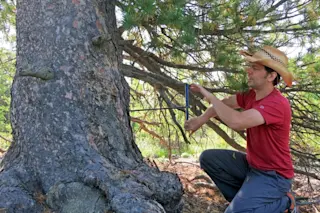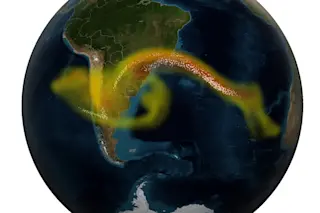By studying variations in tree rings in forests around the world, Neil Pederson and colleagues at the Tree Ring Laboratory at Columbia University’s Lamont-Doherty Earth Observatory in New York have created a record of droughts and wet periods dating back hundreds to thousands of years.
In 2010, while researching the effects of climate change over the past 20 years in Mongolia, his team serendipitously stumbled across a stand of pines that has since revealed the longest-ever climate record in the region. Data from that trip — and another in 2012 — tell a 1,100-year story of rainfall in a land where water is often scarce, and where rain might have meant more vegetation, more herd animals and more meat, milk and cheese.
Now, Pederson and his colleagues are discovering that the wettest period in the country’s history, indicated by the widest series of tree rings, coincides precisely with warrior Chinggis ...














